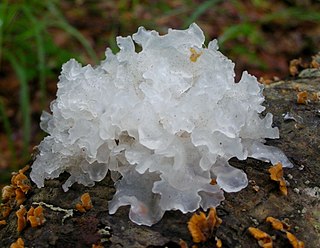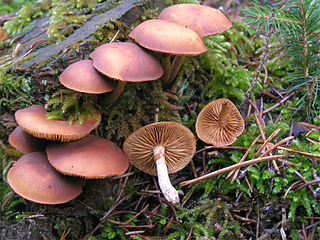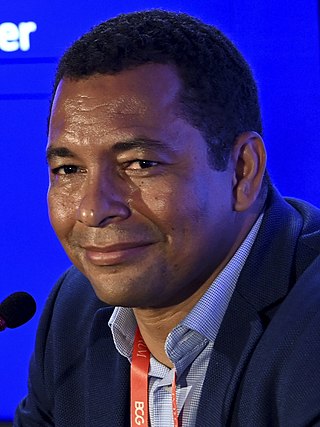
Paulo Coelho de Souza is a Brazilian lyricist and novelist and a member of the Brazilian Academy of Letters since 2002. His 1988 novel The Alchemist became an international best-seller.

Gilberto Passos Gil Moreira, is a Brazilian singer-songwriter and politician, known for both his musical innovation and political activism. From 2003 to 2008, he served as Brazil's Minister of Culture in the administration of President Luiz Inácio Lula da Silva. Gil's musical style incorporates an eclectic range of influences, including rock, Brazilian genres including samba, African music, and reggae.

The Agaricales are an order of fungi in the division Basidiomycota. As originally conceived, the order contained all the agarics, but subsequent research has shown that not all agarics are closely related and some belong in other orders, such as the Russulales and Boletales. Conversely, DNA research has also shown that many non-agarics, including some of the clavarioid fungi and gasteroid fungi belong within the Agaricales. The order has 46 extant families, more than 400 genera, and over 25,000 described species, along with six extinct genera known only from the fossil record. Species in the Agaricales range from the familiar Agaricus bisporus and the deadly Amanita virosa to the coral-like Clavaria zollingeri and bracket-like Fistulina hepatica.

Tremella fuciformis is a species of fungus; it produces white, frond-like, gelatinous basidiocarps. It is widespread, especially in the tropics, where it can be found on the dead branches of broadleaf trees. This fungus is commercially cultivated and is one of the most popular fungi in the cuisine and medicine of China. T. fuciformis is commonly known as snow fungus, snow ear, silver ear fungus, white jelly mushroom, and white cloud ears.

Galerina is a genus of small brown-spore saprobic mushroom-bearing fungi, with over 300 species found throughout the world from the far north to remote Macquarie Island in the Southern Ocean. The genus is most noted for some extremely poisonous species which are occasionally confused with hallucinogenic species of Psilocybe. Galerina mushrooms are typically small and hygrophanous, with a slender and brittle stem. They are often found growing on wood, and when on the ground have a preference for mossy habitats.

Gilberto Aparecido da Silva is a Brazilian former professional footballer who played as a defensive midfielder, most notably for Brazilian side Atlético Mineiro and for English Premier League club Arsenal, as well as for the Brazil national team. He currently serves as an ambassador for both Arsenal and FIFA.

Agaricus subrufescens is a species of mushroom, commonly known as almond mushroom, almond agaricus, mushroom of the sun, God's mushroom, mushroom of life, royal sun agaricus, jisongrong, or himematsutake. A. subrufescens is edible, with a somewhat sweet taste and a fragrance of almonds.

Hypoxylon is a genus of ascomycetes commonly found on dead wood, and usually one of the earliest species to colonise dead wood. A common European species is Hypoxylon fragiforme which is particularly common on dead trunks of beech.

The genus Phallus, commonly known as stinkhorns, is a group of basidiomycetes which produce a phallic, often foul-scented mushroom, from which their name is derived. The genus has a widespread distribution and, according to a 2008 estimate, contains 18 species. They belong to the family Phallaceae in the order Phallales. The best known species is the common stinkhorn.

Geastrum is a genus of puffball-like mushrooms in the family Geastraceae. Many species are commonly known as earthstars.

Auriporia is a small genus of four species of poroid fungi in the family Fomitopsidaceae.

Fomitiporia is a genus of fungi in the family Hymenochaetaceae. According to a 2008 estimate, the widely distributed genus contains 11 species, though three new species were identified in 2010 in sub-Saharan Africa using multigene molecular phylogenetic analysis, and two more were named in a 2013 article. In 2011 it was announced that a specimen of the species F. ellipsoidea was discovered with a fruit body that is largest known of any fungus. However, the species has since been moved to Phellinus.

The Orbiliaceae are a family of saprobic sac fungi. It is the only family in the monotypic class Orbiliomycetes and the monotypic order Orbiliales. The family was first described by John Axel Nannfeldt in 1932 and now contains 288 species in 12 genera. Members of this family have a widespread distribution, but are more prevalent in temperate regions. Some species in the Orbiliaceae are carnivorous fungi, and have evolved a number of specialized mechanisms to trap nematodes.

Mycena interrupta is a species of mushroom. It has a Gondwanan distribution pattern, being found in Australia, New Zealand, New Caledonia and Chile. In Australia, it is found in Victoria, Tasmania, New South Wales, South Australia, and Queensland, where its distribution is limited to Lamington National Park.

Diplomitoporus is a genus of fungi in the family Polyporaceae. The Dictionary of the Fungi estimated the widespread genus to contain 11 species; since then, the genus has grown with the additional of several newly described species, and some transfers from other genera. Diplomitoporus has been described as a wastebasket taxon, containing "species that share common macroscopic and microscopic characteristics, but are not necessarily related."
Henry Dissing was a Danish mycologist and specialist in cup fungi. He was a professor at the University of Copenhagen.

Hypochnella is a genus of corticioid (crust-like) fungi. It is one of several genera that were doubtfully placed in the order Atheliaceae based on microscopic morphological simultaneous with core Atheliaceae genera. However, a molecular study with emphasis on Atheliales, including samples across most agaricomycete orders, retrivied the species Hypochnella violacea within the order Polyporales. Although a close relationship between Hypochnella violacea and genus Australohydnum was suggested, resolving the phylogenetic position of Hypochnella within Polyporales was outside the scope of the study. The genus contains two described species.
Ceratocystis cacaofunesta is an ascomycete fungus that causes a wilt disease in cacao trees. It has led to significant economic losses in Latin America.
Auriporia aurea is a species of poroid fungus. It was first described scientifically by Charles Horton Peck in 1890 as Poria aurea. Leif Ryvarden transferred it to the new genus Auriporia, in which it is the type species.















